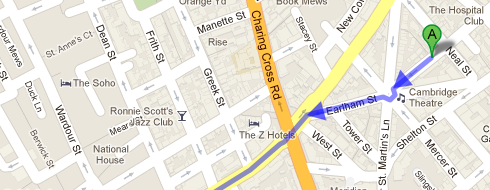Don’t underestimate local knowledge

There’s nothing quite like a new job or a new town (or both) to make you realise you know so little, or that you are out of your ‘comfort zone’! Take an average journey as an example … go to a specific shop for a specific item:
- By Foot – choose the store you want to go to based on distance, availability, or opening times.
- By Car – Drive the known-route to the known-car park for the desired shop or shopping centre and item. Use alternative routes depending on the traffic, use alternative car park if original is full.
- By Bus – Choose the shop or shopping district based on closest, easiest, quickest, or cheapest bus route.
- By Taxi – It doesn’t matter which shop or shopping district you go to, you don’t have to worry about parking or waiting for the bus either?
Now try this without the knowledge you’ve learned over the years you’ve lived in the area you’re in. You don’t know which is the best shop or shopping district to go to. You don’t know the best route to take to get there. You don’t know where the car park is or which is the best, cheapest, or most secure. You’d take the bus but you don’t know where the bus stops are, which is the best ticket to get, how often the buses come, etc. You could ask someone but feel a fool asking such a basic question. This is even worse if you try it in bad weather or when you’re in a rush – you soon feel very uncomfortable and begin to question whether the journey is worth it.
Local knowledge is essential to living in your area, getting around, finding quick routes or avoiding congestion, getting the best deals, or just making the most of the area. When you move somewhere new you ask a colleague, a neighbour, a friend, or even a stranger on the street. You can of course make this easier by planning ahead (if possible) and working out as much of the route as you can (thank you Google Maps and Twitter!).
Now transplant this situation to a new student starting an new (online?) course. Unless the signposts are there for them, unless the route is explained, unless they can see or find their way clearly, they will be lost. Many distant learning students do not know where or who to when they need help, many will not ask for fear of looking silly. Those who do ask are quite often asking the same questions that were asked by a previous cohort (so why haven’t you updated the student guides?).
Make sure the path to learning is not obscured by the difficult navigation or less than simple structure to the information you are providing. Make sure the students find a system or a structure to the resources that is intuitive and/or simple to navigate. Make sure the relevance of the information is made clear – is this a resource they will need every day or once a year? Make sure the important stuff (contact details, timetables, templates, assignments, etc) are easy to find and that each Unit uses the same structure so the students find familiarity in their studies as they progress through your course. Can you give them a ‘map’ – if so then what’s the best format to put it in (downloadable file, online video, describe the ‘journey’ they’re taking, etc).
This kind of approach should not only be for your learning materials but also for the information points and information resources developed to support the students in their studies (non-Unit based), the pastoral care and support (admin, policies, timetables, options choices, etc).
Where are your bus stops and car parks in your materials, and how do the students find them (easily)? Do you give them a map or explain the structure or just expect them to figure it out for themselves? Do you monitor feedback or support queries and revisit the guides to update them if something crops up regularly?


















Maybe it is necessary to refer to some of the books in the reading list which was given out in the first lecture, in order to find some information. But Remember, one of teh main things that university is supposed to teach you is how to THINK.
HI Peter. Teach them how to think, yes. But if they’re new to the campus (or online) shouldn’t we at least point them in the direction of the library and/or which floor/shelf to find the journals or books on?
All the best, David